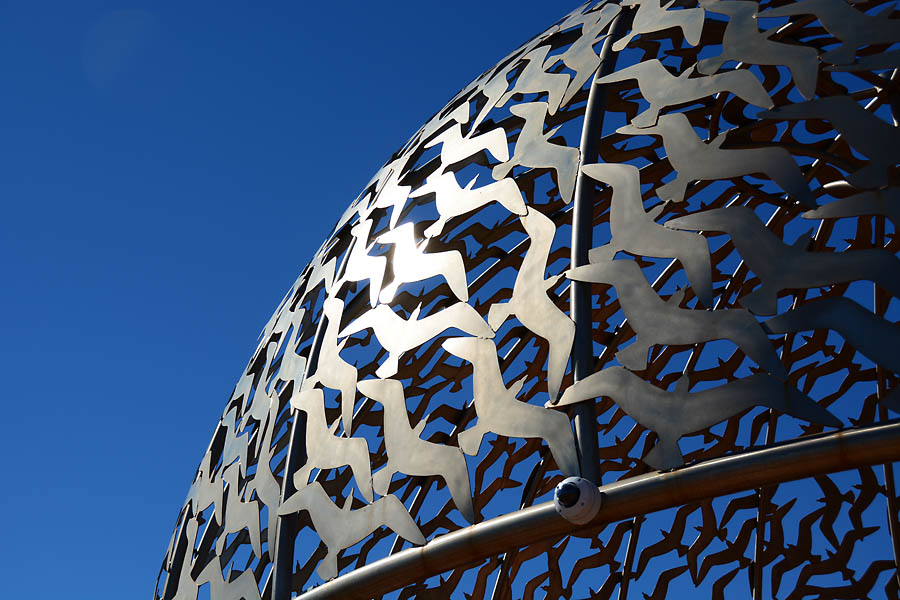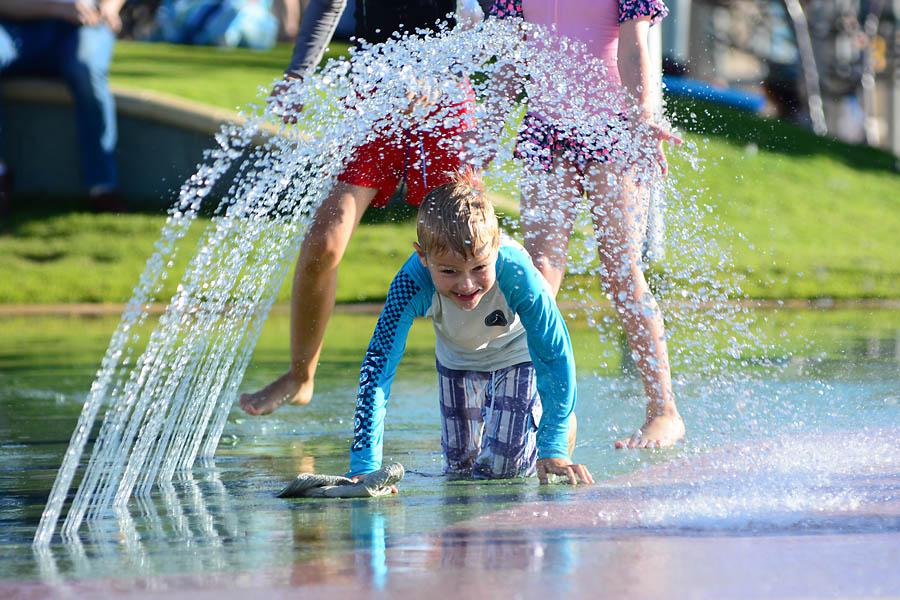Another warm day awaited, and with plans of a mid-morning stop, we packed and were away from Cervantes by 09:30. Our planned stop was Stockyard Gully National Park. After following the pace notes kindly provided by the friendly NP people, including mild corrugations, we parked Alice on the verge near a friendly farmers house (he said ‘everyone parks here, but you guys are the first to come in and ask!’). The next 5 km was on soft sand, and brought us to a typical WA National Park car park, meaning it’s modern, well-kept, informative and almost always includes a clean self composting dunny (but no opportunity to camp)!
The draw card of this NP is a 350m long cave system that runs over a sandy bottomed bone dry river bed. It completely floods from time to time, which would be spectacular to see. The gully leading to the cave was surrounded by several native bee hives, whose honey comb shawls were almost a meter long. A natural apery. Whilst swallows darted in and out of the cave mouth, we donned torches and headed into the engulfing blackness. The cave roof is up to 6m or so high in places and there were no obstructions along the floor. Whilst there weren’t any pretty formations, the cave and gully walk was quietly beautiful and well worth the detour. The boys had some fun in the cave with a few long exposures and torches.
We returned to Alice, hooked up, bade farewell to our friendly farmer (who reckons the north WA coast has 400mm of rain heading their way), and headed to Sunset Beach Holiday Park in Geraldton, clicking over 200,000 km on Betsy’s odometer along the way. The caravan park owners had kindly built a viewing platform to catch the stunning sunsets, which we did, washed down with my diminishing supply of Margaret River red.
The next morning, a Saturday, we visited the local markets as well as the HMAS Sydney memorial – erected before the Sydney and German Kormoran were discovered in 2008.
We also visited the local museum, which covers the 1941 loss and 2008 discovery of the HMAS Sydney and the HSK Kormoran, as well as the many early Dutch ships which met their end along this treacherous section of coast. The grizzly story of mutiny, murder, rescue, trial and retribution of the Batavia was covered in the most detail, which was something we were keen to see given the Fremantle Shipwreck museum was closed for renovations.
The weather was warm and sunny and given the CP pool was closed for repairs we headed back into town for a play at the foreshore water park to let the boys cool off while Kris did a good-sized Woollies shop to stock up on groceries to get us through Kalbarri and Shark Bay.
The next day the boys jumped themselves senseless on the jumping pillow and watched their favourite ABC3 shows on a big screen TV while we indulged in the excellent camp kitchen’s oven, with Kris baking up a bush walking treat storm, followed by pizza for dinner.






on my second visit to the Sydney memorial I saw the addition of a stylised bow of the the ship. It has the draught marks in arabic numerals not Roman, as the ship would have had. Of course everyone knows why the ship builders used Roman numerals for the draught marks – it is easier to cut X, V I, etc with a chisel into wood compared to 5, 7, 8 etc. These days with metric draught marks Arabic numerals are used. I have come to know the sons of the captain (Burnett) and engineer officer (Dalton) over the years. On my first visit I was in the backpackers’ bus. We had a German chap aged mid 20s. To him World War II was all in Europe and had no idea the German Navy was operating around the world. He does now. Cheers, Dad
Dad, only 82,265,999 Germans left to educate!
Cheers, Julian
Sounds like an excellent few days!
Weather was great but in hindsight the best thing of all was NO FLIES!!! love Kris.
Hi JKSJ,
Is it an optical illusion, or is James getting to be as tall as Sam?
Cheers, Grandpa.